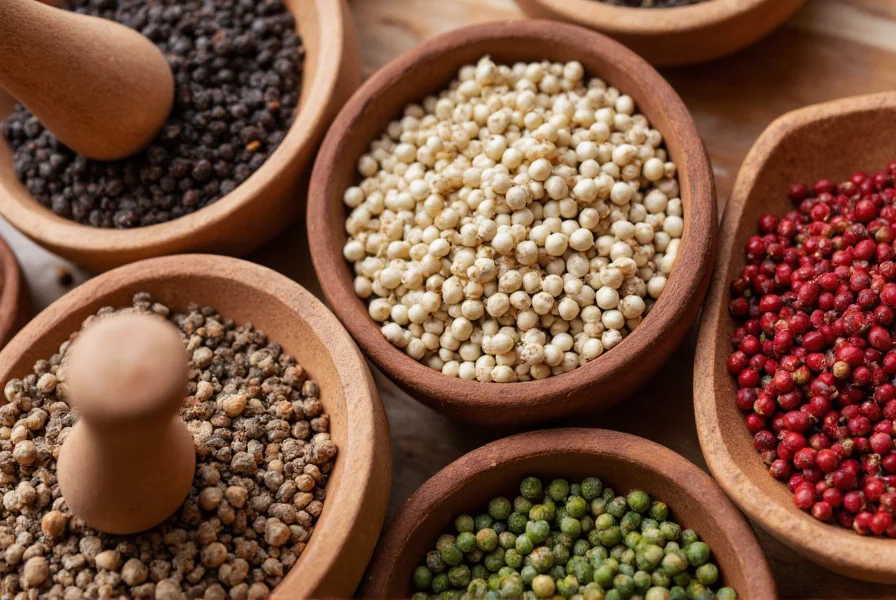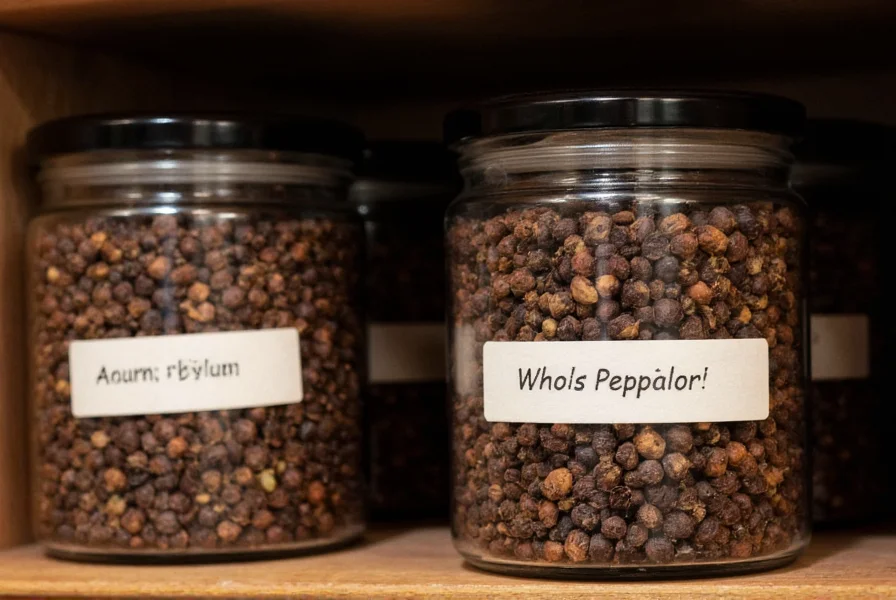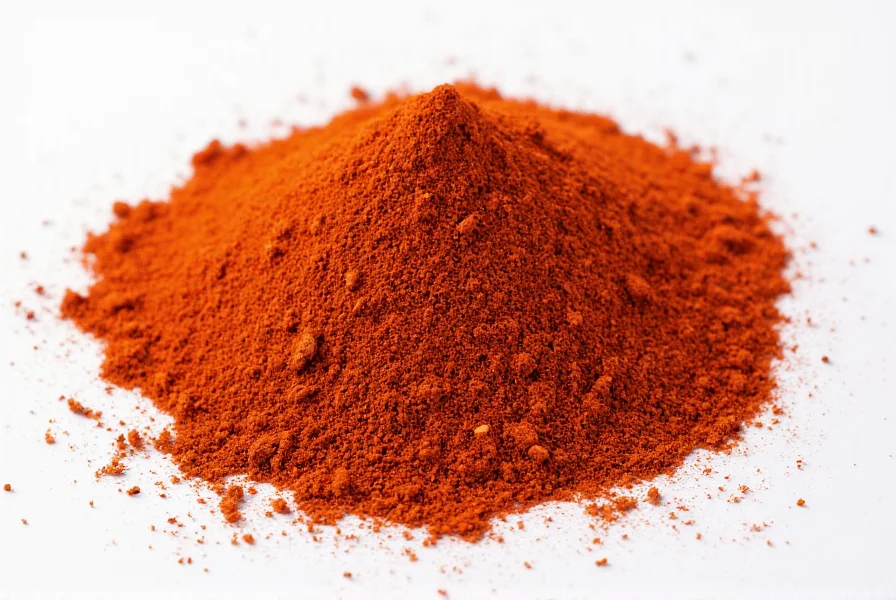Pepper spice refers to the dried berries (peppercorns) of the Piper nigrum plant, one of the world's most widely used and historically significant spices. Black pepper, the most common variety, is produced by cooking and drying unripe green berries, while white pepper comes from ripe berries with the outer layer removed. With its distinctive pungent flavor from the compound piperine, pepper enhances dishes across global cuisines and offers documented health benefits including improved nutrient absorption and antioxidant properties.
For millennia, pepper spice has shaped culinary traditions and even global trade routes. This versatile seasoning isn't just for adding heat—it's a complex flavor enhancer with surprising health properties and diverse applications that extend far beyond the standard pepper mill on your dinner table.
The Historical Journey of Pepper Spice
Originating in India's Malabar Coast, black pepper was so valuable in ancient Rome it was literally worth its weight in gold. Arab traders controlled the spice route for centuries, creating elaborate myths about its origins to protect their monopoly. During the Middle Ages, pepper became a status symbol in Europe, often used as collateral or even currency. The quest for direct access to pepper spice routes fueled the Age of Exploration, with Vasco da Gama's voyage to India motivated primarily by the desire to bypass Venetian spice merchants.
Understanding Different Pepper Varieties
While many consumers think of pepper as simply "black" or "white," the reality is far more nuanced. All true peppercorns come from the same flowering vine (Piper nigrum), with processing methods creating different varieties:
| Pepper Type | Processing Method | Flavor Profile | Best Culinary Uses |
|---|---|---|---|
| Black Pepper | Unripe berries cooked and sun-dried | Sharp, pungent, complex with floral notes | All-purpose seasoning, especially meats and sauces |
| White Pepper | Ripe berries soaked to remove outer layer | Milder, earthier, less complex | Cream sauces, light-colored dishes where black specks are undesirable |
| Green Pepper | Unripe berries preserved in brine or freeze-dried | Fresher, fruitier, less pungent | Asian cuisine, seafood dishes, creative cocktails |
| Red Pepper | Ripe berries dried with outer layer intact | Sweet, fruity, floral with moderate heat | Fruit salads, desserts, specialty sauces |
The Science Behind Pepper's Pungency
The characteristic bite of black pepper comes from piperine, a bioactive compound making up 4-9% of peppercorns. Unlike capsaicin in chili peppers (which affects heat receptors), piperine stimulates different nerve endings, creating that distinctive sharp sensation. Recent research published in the Journal of Agricultural and Food Chemistry confirms piperine enhances the bioavailability of key nutrients like curcumin by up to 2,000%, explaining why traditional Indian cuisine combines turmeric with black pepper.
Interestingly, the piperine concentration varies significantly based on growing conditions. Peppercorns from Vietnam's highlands contain up to 15% more piperine than those from Brazil, directly impacting their heat level and preservation qualities. This geographical variation explains why professional chefs often specify pepper origin when developing recipes.

Practical Applications in Modern Cooking
Understanding when and how to use pepper spice can transform your cooking. Contrary to popular belief, adding pepper at the beginning of cooking doesn't "burn off" its flavor—instead, it allows piperine to integrate with other ingredients. For maximum aromatic impact, however, adding freshly ground pepper during the final minutes preserves its volatile essential oils.
Chefs specializing in molecular gastronomy have discovered that soaking peppercorns in neutral spirits like vodka for 24 hours extracts flavor compounds without bitterness, creating versatile pepper infusions for sauces and dressings. This technique works particularly well with Tellicherry peppercorns, known for their complex flavor notes of eucalyptus and floral undertones.
Health Benefits Supported by Research
Beyond flavor enhancement, pepper spice offers several scientifically documented health benefits. A 2023 meta-analysis in Nutrients confirmed that regular consumption of black pepper:
- Enhances digestion by stimulating hydrochloric acid production
- Improves absorption of key nutrients including selenium, B vitamins, and beta-carotene
- Exhibits anti-inflammatory properties comparable to some pharmaceutical agents
- May support cognitive function through neuroprotective effects
It's important to note that these benefits are most pronounced with whole peppercorns rather than pre-ground pepper, which loses up to 90% of its volatile compounds within 15 minutes of grinding. For maximum health impact, grind pepper immediately before use and pair with turmeric-containing dishes.
Selecting and Storing Pepper for Optimal Flavor
When purchasing pepper spice, look for whole peppercorns that are heavy for their size (indicating moisture content) and uniform in color. Specialty varieties like Lampong pepper from Indonesia should have a matte finish rather than glossy appearance, which often indicates chemical treatment.
Proper storage maintains pepper's potency:
- Air-tight glass container away from light and heat
- Whole peppercorns retain flavor for 2-3 years
- Pre-ground pepper loses 50% of flavor compounds within 1 month
- Freezing peppercorns preserves volatile oils for extended periods

Pepper in Global Culinary Traditions
While Western cuisine typically uses pepper as a finishing touch, many global traditions incorporate it more creatively. In Thai cuisine, black pepper features prominently in prik Thai (Thai pepper) blends used for seafood dishes. Ethiopian berbere spice mix combines black pepper with chili, fenugreek, and ginger for complex stews. Scandinavian gravlax recipes use coarsely cracked pepper mixed with sugar and dill for salmon curing.
One particularly interesting application comes from Peruvian cuisine, where pink peppercorns (from a different plant family) are combined with black pepper in a 1:3 ratio to create a nuanced heat profile for ceviche. This technique demonstrates how understanding pepper varieties allows for sophisticated flavor layering beyond simple heat adjustment.
Common Misconceptions About Pepper Spice
Several myths persist about this ancient spice. Contrary to popular belief, white pepper isn't "milder" than black pepper—it contains similar piperine levels but lacks the outer layer's aromatic compounds, creating a different sensory experience. Additionally, the notion that pepper "goes bad" is inaccurate; while it loses potency, properly stored peppercorns remain safe indefinitely.
Another widespread misconception involves heat measurement. Unlike chili peppers measured in Scoville units, pepper's pungency is quantified through High-Performance Liquid Chromatography (HPLC) measuring piperine concentration. This explains why two black peppers from different regions can have identical heat levels despite varying flavor profiles.
Conclusion: Elevating Your Culinary Experience
Understanding pepper spice goes far beyond simply reaching for the shaker. By recognizing the different varieties, their unique flavor profiles, and proper usage techniques, home cooks and professional chefs alike can significantly elevate their culinary creations. The next time you reach for pepper, consider its remarkable journey from ancient trade routes to your kitchen, and how this simple spice continues to shape global cuisine through its complex chemistry and versatile applications. Whether enhancing a simple salad or creating sophisticated sauces, pepper remains an indispensable tool in the culinary arsenal—one that deserves thoughtful consideration rather than automatic application.











 浙公网安备
33010002000092号
浙公网安备
33010002000092号 浙B2-20120091-4
浙B2-20120091-4